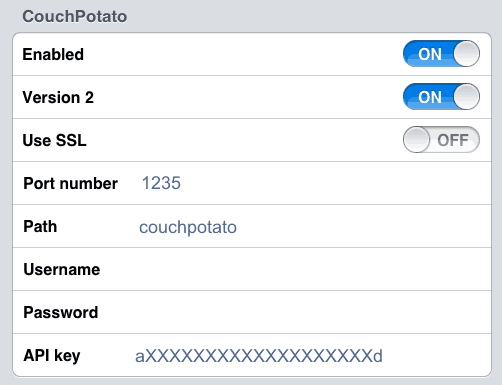

- #Sabnzbd too many connections to server how to#
- #Sabnzbd too many connections to server registration#

You can view your generated SSL-certificate by clicking the ‘ SSL’-tab inside the ‘ Certificates‘-screen.
#Sabnzbd too many connections to server registration#
This is required for registration to the Let’s Encrypt-club - that’s not really a thing. Assuming you’ve managed to find Let’s Encrypt’s configuration-page, enter the domain you use to access OMV’s Web Interface (e.g.
#Sabnzbd too many connections to server how to#
How to Configure OMV’s Let’s Encrypt plugin I’ve tried the same for Plex, but to create a Reverse Proxy for Plex we need a different approach. In other words, your NAS is already accessible from ‘the outside’, but now you want to secure it with SSL and an Nginx Reverse Proxy.ĭisclaimer: I managed to apply this tutorial succesfully to Sabnzbd, Couchpotato, Sonarr (and Radarr, which works the same way) and Transmission. Your domain forwarding (the A- and CNAME-records in your domain’s DNS) and port forwarding (on your router at home) is setup properly and working. You have a NAS running on OpenMediaVault 2.x or higher with the repository installed. I decided to put together my own tutorial on how to setup a reverse proxy for nginx in OpenMediaVault with Let’s Encrypt SSL encryption. ) so that all apps can use the same SSL-certificate provided by the Let’s Encrypt plugin.īecause I’ve spent a few days trying to figure this out, scrambling parts of other how-to’s together. In some tutorials the reverse proxy is set up using subdomains. sabnzbd) and forward that request to the corresponding port inside your local network (LAN). After following this tutorial Nginx will parse the URI (e.g. You only have to open up one port on your modem/router, instead seperate ports for each application. If you want to access your OpenMediaVault NAS from the web (WAN), using a Reverse Proxy is the safest method. In this tutorial I will show you how to setup a Nginx Reverse Proxy in OpenMediaVault for several popular applications: SABnzbd, Radarr, Sonarr and Tranmission.


 0 kommentar(er)
0 kommentar(er)
